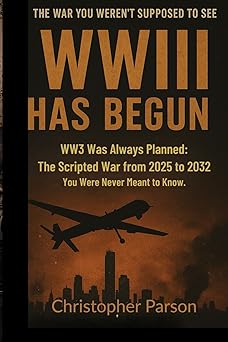
Mark Galeotti’s Kyiv 2022: The Battle for Ukraine’s Capital is a concise yet deeply researched account of one of the defining moments of the Russian invasion of Ukraine. Published in June 2026, this illustrated paperback captures the chaos, courage, and critical decisions that shaped the defense of Kyiv in the early weeks of the war.
Overview
This book is part of Osprey’s acclaimed “Raid” series, known for blending sharp military analysis with accessible storytelling and detailed visuals. In just eighty pages, Galeotti offers a focused narrative of Russia’s failed attempt to capture Kyiv and the remarkable resilience shown by Ukrainian defenders.
Purpose and Approach
Rather than a broad war chronicle, this volume zeroes in on the pivotal events surrounding the capital. Galeotti examines how the Russian high command planned a lightning strike to decapitate Ukraine’s leadership, expecting a quick and decisive victory. He then traces how those plans unraveled under fierce resistance, poor logistics, and unexpected Ukrainian strength.
The book explores the tactical, logistical, and psychological dimensions of the battle. It walks readers through Russia’s early strategy to seize key points such as Hostomel Airport, its miscalculations about supply lines and morale, and how Ukraine’s defenders, supported by civilians, thwarted what was supposed to be a swift takeover. The story concludes with Russia’s retreat and the symbolic turning point it represented for both nations.
Structure and Content
The book is organized around several clear phases. It begins by setting the stage, explaining the pre-war buildup, the assumptions on both sides, and the intelligence failures that led to misjudged expectations. It then dives into the execution of the assault, the airborne raids, and the disastrous congestion of the long Russian convoy that became a symbol of overreach.
From there, Galeotti moves into analysis—dissecting the reasons behind the Russian failure, from poor coordination and communication to the underestimation of Ukrainian morale. The closing sections place the battle in context, showing how the defense of Kyiv reshaped the wider conflict and shattered the myth of Russian invincibility.
Strengths
One of the book’s greatest strengths is its clarity. Galeotti writes with precision and authority, distilling complex military operations into an engaging narrative. His experience in Russian military and security affairs gives the analysis weight, while the visual aids—maps, photos, and artwork—help the reader understand the terrain and the tactical choices made during the fighting.
The balance of military detail and readability makes this book suitable for both experts and general readers. It also benefits from the inclusion of perspectives from both sides, giving a sense of authenticity and depth to the account. The book’s focus on Kyiv allows it to avoid the clutter of larger war studies and instead highlight the human and strategic drama of those crucial first weeks.
Limitations
Because of its brief format, the book cannot explore every battle or delve deeply into the civilian experience. Readers seeking personal stories, frontline testimonies, or a broader political history of the war may find it somewhat narrow. The short page count also means that some details are summarized rather than explored fully.
Another limitation lies in timing. With the book arriving only a few years after the events it describes, much of the information still depends on partial or contested sources. As the war continues to unfold and archives open, future historians may refine or challenge some of its conclusions.
Key Insights
The capture and loss of Hostomel Airport emerge as a central theme, symbolizing the gap between Russia’s ambition and execution. The infamous forty-mile convoy north of Kyiv serves as a lesson in logistical failure. Galeotti shows how the defense of Kyiv combined professional tactics with improvised urban warfare and civilian resistance, illustrating a modern model of national resilience.
Most importantly, the book makes clear that Russia’s failure to seize Kyiv was not merely a battlefield loss—it was a strategic and psychological collapse that forced Moscow to redefine its entire campaign. For Ukraine, it marked the moment when survival turned into determination and global perception shifted in its favor.
Audience
This book is ideal for readers of military history, analysts of modern warfare, or anyone who wants to understand why the Battle of Kyiv became the war’s first great turning point. Its accessible style makes it a strong introduction for newcomers, while its analysis and visual presentation will appeal to more seasoned students of conflict.
Conclusion
Kyiv 2022: The Battle for Ukraine’s Capital is a sharp, authoritative account of how an outnumbered nation stopped a major invasion at its gates. Mark Galeotti succeeds in combining historical accuracy, clear analysis, and visual storytelling into a compact but powerful work. While limited by its length and the freshness of the events it describes, it stands as one of the most vivid and informative examinations of the early war in Ukraine.
It is not just a story of military failure and success—it is the story of how Kyiv, against all odds, held the line and changed the course of modern history.

